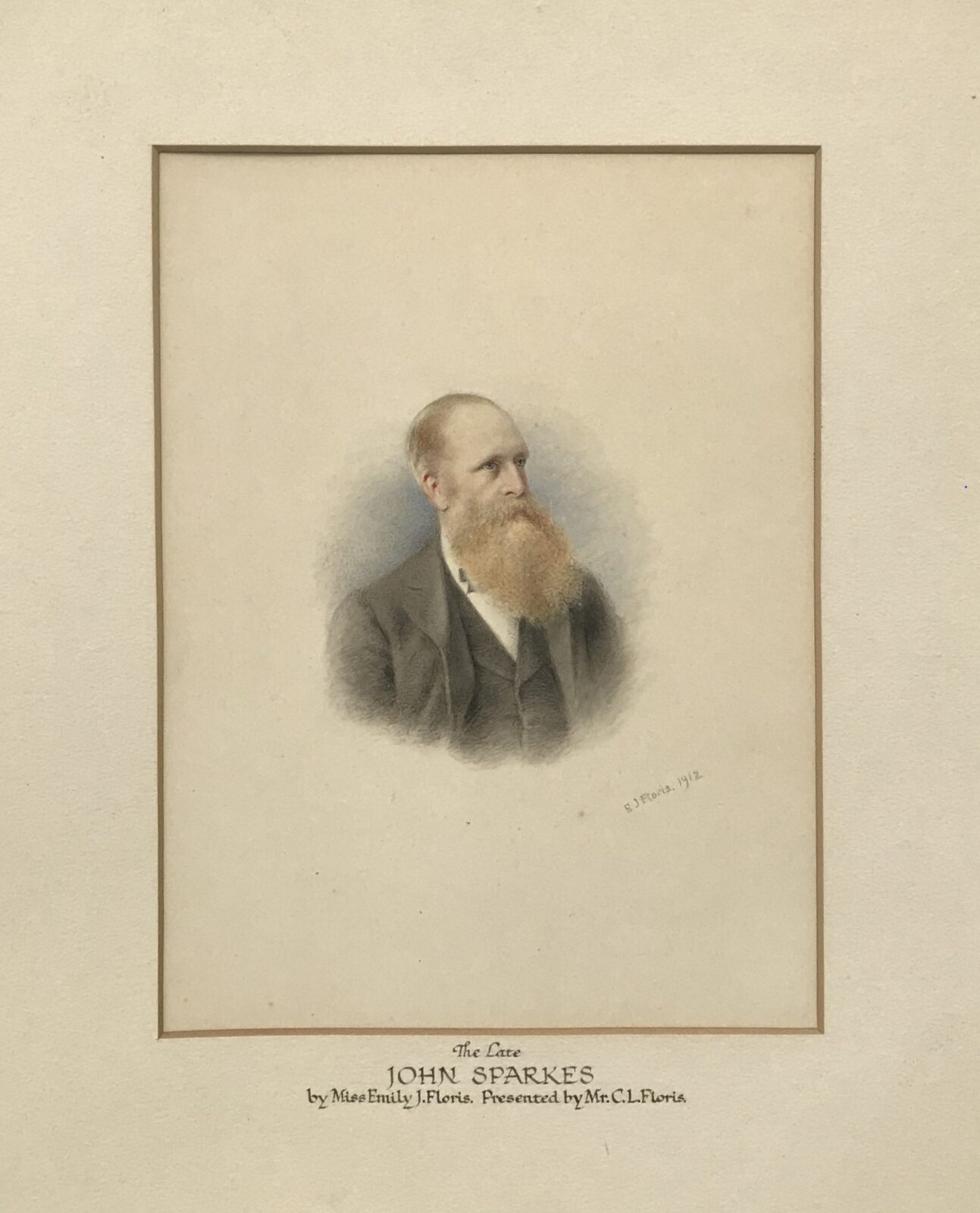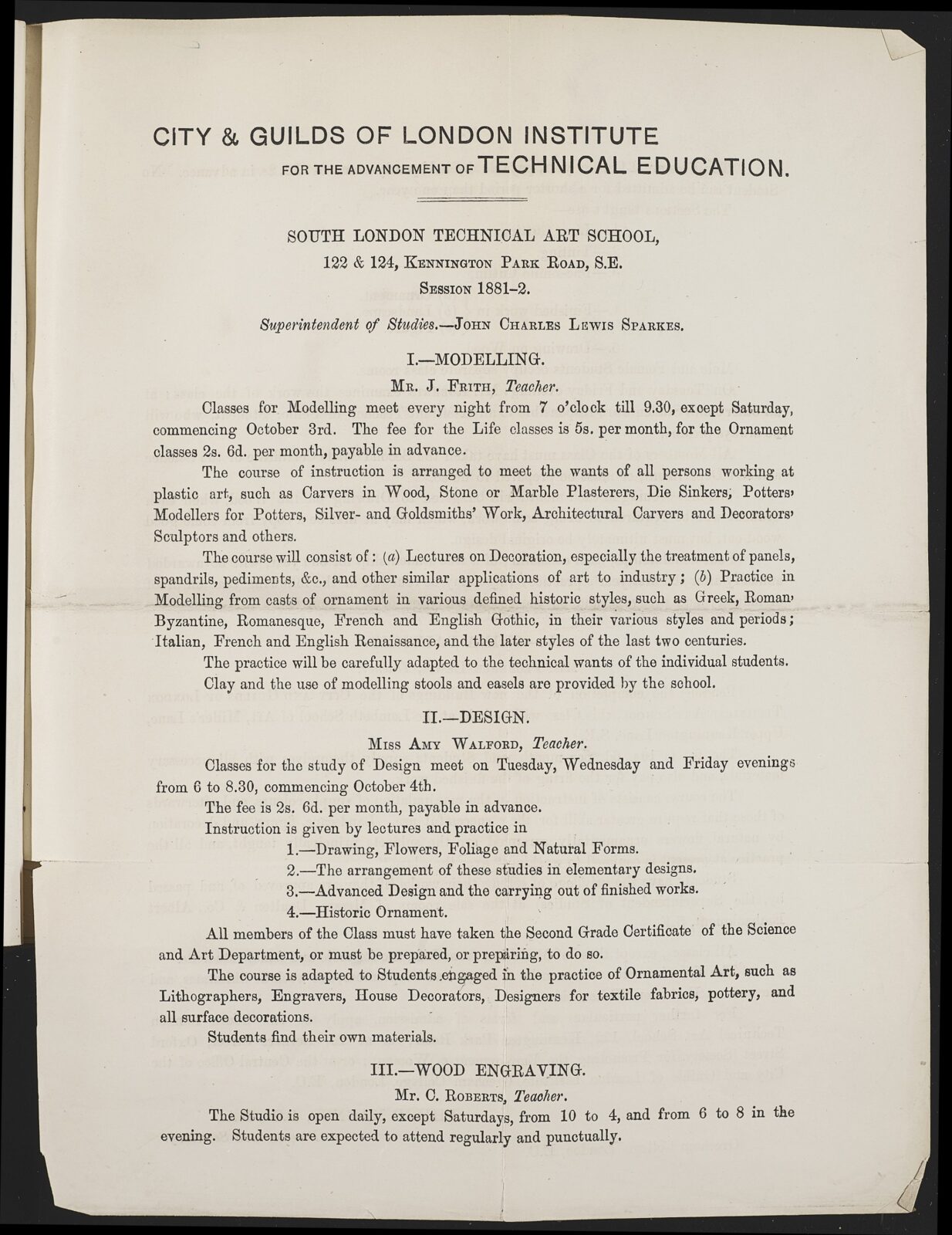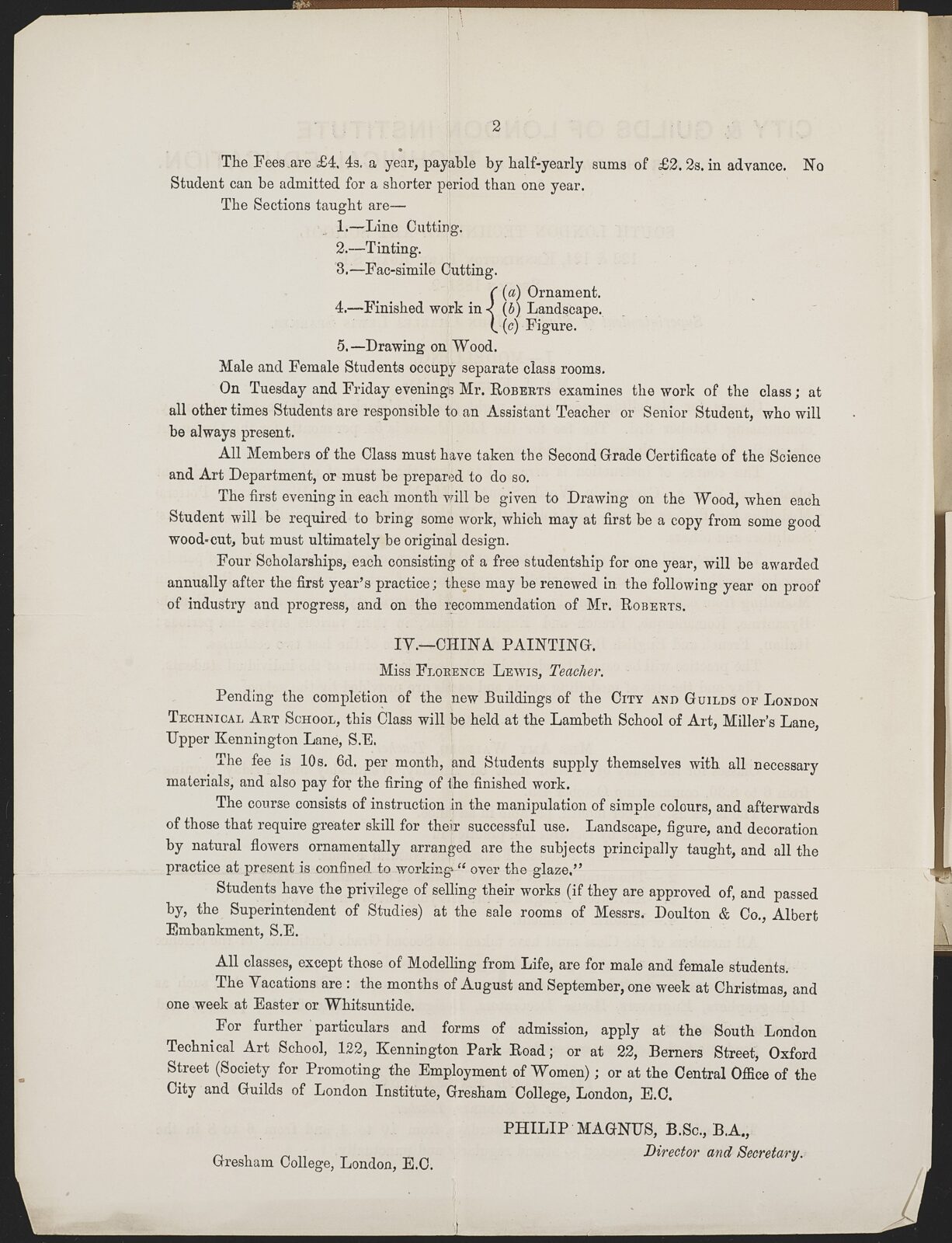To celebrate this year’s International Archives Week (8-14 June 2020), we are showcasing some archive material relating to our current material of choice: clay. Some recent digging in the Art School’s archives, held at London Metropolitan Archives as part of the City & Guilds of London Institute collection, uncovered some historic programmes dating back to the late nineteenth century. These programmes detail the various classes taught at Art School, and the persistence of clay as a teaching material throughout its history.
The earliest programme found at London Metropolitan Archives was from 1881, when the Art School was known as the South London Technical Art School – later to be renamed the Kennington and Lambeth Art School in 1933, and the City & Guilds Art School in 1937 – under Superintendent of Studies John Sparkes.

CGLAS Archive
Life and ornament modelling classes, under Mr. J. Frith, were designed to cater for working craftspeople and artisans in various trades: “carvers in wood, stone or marble plasterers, die sinkers, potters, modellers for potters, silver- and goldsmiths’ work, architectural carvers and decorators, sculptors and others”, and took place at night to accommodate students’ working commitments during the day. It should be noted that although the Art School was open to male and female students alike (and only the wood engraving class description specifies that classes were segregated by gender), at this time, life modelling classes were open to male students only.
The cost of classes was notably affordable; five shillings a month for life modelling classes equates to approximately £17 today – roughly half a day’s wages for a skilled tradesman in the 1880s – with clay and equipment provided for students.
Some elements of the modelling curriculum remain to this day, such as “practice in modelling from casts and ornament in various historic styles, such as Greek, Roman, Byzantine, Romanesque, French and English Gothic, in their various styles and periods; Italian, French and English Renaissance, and the later styles of the last two centuries.”

London Metropolitan Archives, City of London
CLC/211/MS21993/001: Programme of South London Technical Art School, 1881-2, p.1
As well as clay modelling, the Art School ran China painting classes, taught by Miss Florence Lewis, who later published a book on the subject (Cassell & Co., 1883). These were held in the Art School’s erstwhile premises on Miller’s Lane – now St Oswald’s Place Vauxhall – a convenient location for the nearby Doulton Pottery buildings on Black Prince Road and the Albert Embankment, where students had the opportunity of selling their work.
The focus of these classes was painting “over the glaze”, with decoration in “landscape, figure, and […] natural flowers ornamentally arranged”. China painting was a more costly prospect for students, at 10 shillings and sixpence for a month’s classes – roughly £35 today, or a day’s wages in the 1880s – and with students providing their own materials and paying to fire their finished work.

London Metropolitan Archives, City of London
CLC/211/MS21993/001: Programme of South London Technical Art School, 1881-2, p.2
Anyone interesting in further exploring the Art School’s archives at London Metropolitan Archives can search the catalogue to find out more.

